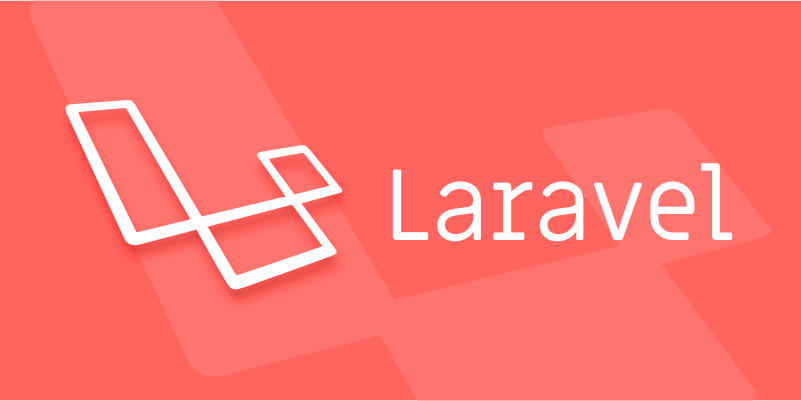Configuring and using different storage drivers in Laravel
Jul 05, 2025 am 12:55 AMLaravel provides multiple storage drivers like local, public, s3, ftp, and rackspace, each serving different use cases.1. Choose local or public for small apps where files are stored on the server or publicly accessible.2. Use s3 for scalable cloud storage by configuring AWS credentials and bucket details in filesystems.php and .env.3. Configure ftp by providing host, username, password, and root path.4. Interact with files via the Storage facade using methods like put(), get(), and store().5. Set visibility to public when sharing files externally.6. Run php artisan storage:link to make public disk files web-accessible via symlink. Proper configuration and visibility settings are essential to avoid issues across environments.

When working with file storage in Laravel, the framework gives you a flexible way to manage files across different storage drivers like local, S3, FTP, and more. Choosing and configuring the right driver matters when handling uploads, backups, or serving media from cloud providers.

Understanding Available Storage Drivers
Laravel supports several built-in storage drivers out of the box:

-
local: Files are stored on your server’s local filesystem. -
public: Similar to local, but files are publicly accessible (usually stored instorage/app/publicand linked topublic/storage). -
s3: Uses Amazon S3 for storing files. -
ftp/sftp: For uploading files via FTP(S) or SFTP. -
rackspace: Less common now, but still supported for legacy setups.
Each driver serves a specific purpose. If you're building a small app or just prototyping, local or public might be enough. But if you're deploying an app that needs scalable and globally accessible media, using s3 makes more sense.
Configuring a Driver in filesystems.php
All configuration happens in the config/filesystems.php file. Here's how you set up each driver:

For local or public:
'disks' => [
'local' => [
'driver' => 'local',
'root' => storage_path('app'),
],
'public' => [
'driver' => 'local',
'root' => storage_path('app/public'),
'url' => env('APP_URL').'/storage',
'visibility' => 'public',
],
]For Amazon S3, you'll need AWS credentials and a bucket name:
's3' => [
'driver' => 's3',
'key' => env('AWS_ACCESS_KEY_ID'),
'secret' => env('AWS_SECRET_ACCESS_KEY'),
'region' => env('AWS_DEFAULT_REGION'),
'bucket' => env('AWS_BUCKET'),
'url' => env('AWS_URL'),
],Make sure to fill these values in your .env file:
AWS_ACCESS_KEY_ID=your-key AWS_SECRET_ACCESS_KEY=your-secret AWS_DEFAULT_REGION=us-east-1 AWS_BUCKET=your-bucket-name AWS_URL=https://your-bucket.s3.amazonaws.com
You can also configure ftp by providing host, username, password, and root path.
Using the Storage Facade in Your Code
Once configured, interacting with files is straightforward using the Storage facade.
To save a file:
use Illuminate\Support\Facades\Storage;
Storage::disk('s3')->put('avatars/'.$user->id, $fileContents);To get a file:
$contents = Storage::disk('s3')->get('avatars/1');If you're handling file uploads from forms, especially images or documents:
$request->file('avatar')->store('avatars', 's3');This stores the uploaded file under the avatars directory using the s3 disk.
One thing to note: visibility settings affect how files are accessed. Use 'visibility' => 'public' when files need to be shared externally, otherwise stick with default private access unless needed.
Also, when using the public disk, don’t forget to run:
php artisan storage:link
This creates a symlink from public/storage to storage/app/public, allowing public access to those files via the web.
That’s basically it — configure the right driver, use the right disk in your code, and make sure permissions and visibility are set properly. It’s not complicated, but easy to misconfigure, especially when moving between environments or switching drivers.
The above is the detailed content of Configuring and using different storage drivers in Laravel. For more information, please follow other related articles on the PHP Chinese website!

Hot AI Tools

Undress AI Tool
Undress images for free

Undresser.AI Undress
AI-powered app for creating realistic nude photos

AI Clothes Remover
Online AI tool for removing clothes from photos.

Clothoff.io
AI clothes remover

Video Face Swap
Swap faces in any video effortlessly with our completely free AI face swap tool!

Hot Article

Hot Tools

Notepad++7.3.1
Easy-to-use and free code editor

SublimeText3 Chinese version
Chinese version, very easy to use

Zend Studio 13.0.1
Powerful PHP integrated development environment

Dreamweaver CS6
Visual web development tools

SublimeText3 Mac version
God-level code editing software (SublimeText3)

Hot Topics
 Laravel Vue.js single page application (SPA) tutorial
May 15, 2025 pm 09:54 PM
Laravel Vue.js single page application (SPA) tutorial
May 15, 2025 pm 09:54 PM
Single-page applications (SPAs) can be built using Laravel and Vue.js. 1) Define API routing and controller in Laravel to process data logic. 2) Create a componentized front-end in Vue.js to realize user interface and data interaction. 3) Configure CORS and use axios for data interaction. 4) Use VueRouter to implement routing management and improve user experience.
 How to test Laravel API interface?
May 22, 2025 pm 09:45 PM
How to test Laravel API interface?
May 22, 2025 pm 09:45 PM
Efficient methods for testing Laravel API interfaces include: 1) using Laravel's own testing framework and third-party tools such as Postman or Insomnia; 2) writing unit tests, functional tests and integration tests; 3) emulating a real request environment and managing database status. Through these steps, the stability and functional integrity of the API can be ensured.
 How to customize Laravel's user authentication logic?
May 22, 2025 pm 09:36 PM
How to customize Laravel's user authentication logic?
May 22, 2025 pm 09:36 PM
Custom Laravel user authentication logic can be implemented through the following steps: 1. Add additional verification conditions when logging in, such as mailbox verification. 2. Create a custom Guard class and expand the authentication process. Custom authentication logic requires a deep understanding of Laravel's authentication system and pay attention to security, performance and maintenance.
 How to create Laravel package (Package) development?
May 29, 2025 pm 09:12 PM
How to create Laravel package (Package) development?
May 29, 2025 pm 09:12 PM
The steps to create a package in Laravel include: 1) Understanding the advantages of packages, such as modularity and reuse; 2) following Laravel naming and structural specifications; 3) creating a service provider using artisan command; 4) publishing configuration files correctly; 5) managing version control and publishing to Packagist; 6) performing rigorous testing; 7) writing detailed documentation; 8) ensuring compatibility with different Laravel versions.
 Laravel integration with social media login (OAuth)
May 22, 2025 pm 09:27 PM
Laravel integration with social media login (OAuth)
May 22, 2025 pm 09:27 PM
Integrating social media login in the Laravel framework can be achieved by using the LaravelSocialite package. 1. Install the Socialite package: use composerrequirelaravel/socialite. 2. Configure the service provider and alias: add relevant configuration in config/app.php. 3. Set API credentials: Configure social media API credentials in .env and config/services.php. 4. Write controller method: Add redirection and callback methods to handle social media login process. 5. Handle FAQs: Ensure user uniqueness, data synchronization, security and error handling. 6. Optimization practice:
 How to implement password reset function in Laravel?
May 22, 2025 pm 09:42 PM
How to implement password reset function in Laravel?
May 22, 2025 pm 09:42 PM
Implementing password reset function in Laravel requires the following steps: 1. Configure the email service and set relevant parameters in the .env file; 2. Define password reset routes in routes/web.php; 3. Customize email templates; 4. Pay attention to email sending problems and the validity period of tokens, and adjust the configuration if necessary; 5. Consider security to prevent brute-force attacks; 6. After the password reset is successful, force the user to log out of other devices.
 Common security threats and protection measures for Laravel applications
May 22, 2025 pm 09:33 PM
Common security threats and protection measures for Laravel applications
May 22, 2025 pm 09:33 PM
Common security threats in Laravel applications include SQL injection, cross-site scripting attacks (XSS), cross-site request forgery (CSRF), and file upload vulnerabilities. Protection measures include: 1. Use EloquentORM and QueryBuilder for parameterized queries to avoid SQL injection. 2. Verify and filter user input to ensure the security of output and prevent XSS attacks. 3. Set CSRF tokens in forms and AJAX requests to protect the application from CSRF attacks. 4. Strictly verify and process file uploads to ensure file security. 5. Regular code audits and security tests are carried out to discover and fix potential security vulnerabilities.
 What is Middleware in Laravel? How to use it?
May 29, 2025 pm 09:27 PM
What is Middleware in Laravel? How to use it?
May 29, 2025 pm 09:27 PM
Middleware is a filtering mechanism in Laravel that is used to intercept and process HTTP requests. Use steps: 1. Create middleware: Use the command "phpartisanmake:middlewareCheckRole". 2. Define processing logic: Write specific logic in the generated file. 3. Register middleware: Add middleware in Kernel.php. 4. Use middleware: Apply middleware in routing definition.






